How to Use Facebook Live for Learning: 5 Outcomes, 4 Things to Remember, 4 Mistakes to Avoid, 1 Great Video

It's no secret that livestreaming video that can be viewed later, is an incredibly powerful learning tool. In fact @MarkBarnes19 explained in this #HackLearning podcast, that livestreaming has the potential to break down the walls of school.
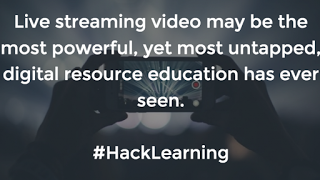
The problem is that despite we know this is true, it hasn't. The question is why?
The answer...
Because it's not that simple. Regardless of the platform, there are a lot of confusing little details. A Google Hangout on Air requires "7 Not So Simple Steps." There are platforms like UStream and Livestream, but still, not so simple and not so intuitive for others to find. Some people use Skype add-ons and equipment to record, but add-ons and equipment are not that simple.
But, there's good news. That has all changed.
Facebook Live puts the simple into livestreaming. Seriously! If you can write a Facebook post, you can "Go Live!" Here's how:
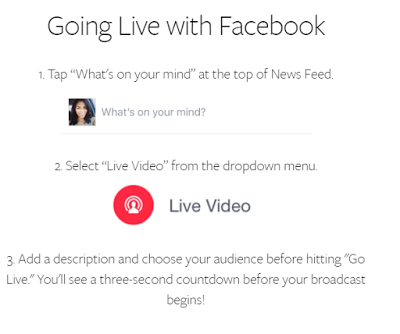
It's literally that simple. I tested out my first Go Live broadcast of a learning event this week capturing Alan November speaking to leaders in New York City.
Tools and ideas to transform education. Sign up below.
The first thing you should know is this.
It was AWESOME!!!!!!!!
So awesome that I think every educator who considers themselves innovative as well as those who don't should be doing this. With just my phone, a Facebook post, and no preparation, I made a livestream that got this reaction.
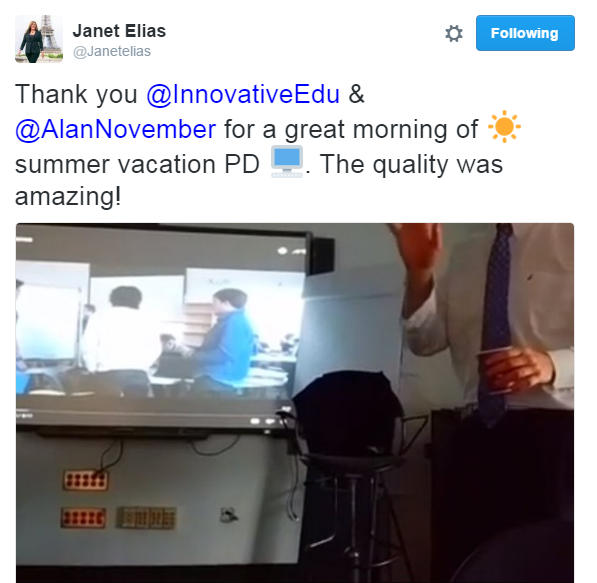
The second thing you should know is this.
I learned a few things and made some mistakes and now you won't have to.
So, here's what I learned and the mistakes to avoid that I am sharing with you so that you can begin breaking down the walls of your schools and classrooms.
5 Super cool outcomes:
Below I share the super cool stuff represented by each numbered arrow.
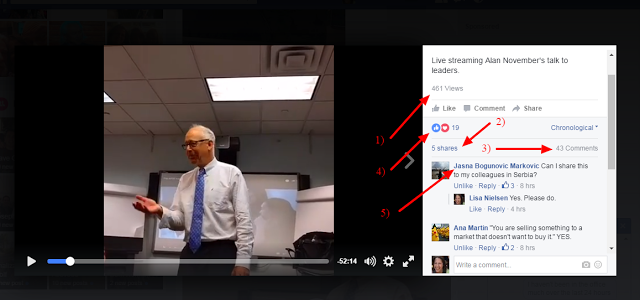
1) View widely
A select group of leaders were able to attend an exclusive leadership session with Alan November, but many more wanted to join us. They couldn't for various reasons i.e. we didn't have the space to accommodate them, they had other commitments. Putting Alan live enabled us to extend the learning that was taking place with dozens to hundreds of educators. 461 to be exact, within a few hours of the Live broadcast. not just from New York City, but from around the globe.
2) Amplify
I shared with the world and others did too. On the day of the live stream five others shared with their networks what I shared with mine.
3) Hear the world
While Alan was being livestreamed viewers were commenting and I was responding. After the talk Alan was able to read what they wrote and respond as well.
4) Feel the love
While the live stream is taking place you see likes, loves, and laughs flash by on your feed. The reaction of the audiences thoughts literally becomes visible.
5) Connect globally
People anywhere in the world were able to view the video because I posted it publicly. That meant that not only were local educators at NYC Schools were able to view the video, but we also had viewers from around the world. In fact, as we were streaming live, a viewer from Serbia asked for permission to share with colleagues.
4 things to remember
Below I share some items I realized are helpful to remember to do.
1) Bring a charger!
I recorded Alan for about an hour and then my battery was shot. If you're planning to live stream a session, bring your charger.
2) Use wireless
Make sure you connect to wireless if you don't have unlimited data.
3) Get a buddy or a tripod
It gets to be a bit of a pain to hold the phone up. Especially if you want to interact with your viewers. Make sure you have a tripod or a buddy to help with the filming.
4) Have a second device
Because I had a laptop I was more easily able to react and respond to posts of viewers.
4 Mistakes to avoid
Below I share some lessons learned represented by each numbered arrow.
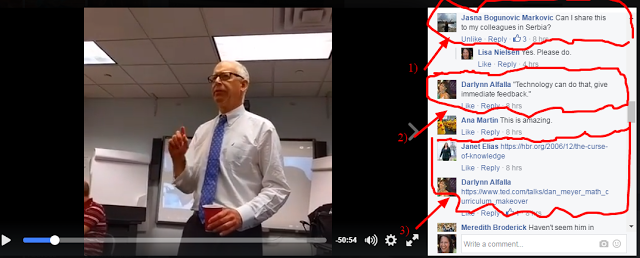
1) Ask permission before you start streaming
I know Alan well, and was pretty sure he wouldn't mind me sharing what he was saying with the world. I asked after and as I suspected he was fine with it, but I should have asked first to be sure. I also should have asked participants if they minded being in the live stream. If I had done that, I could have filmed those who were engaging in the conversation rather than just focusing the camera on Alan. I did film a few colleagues who I knew from experience likely wouldn't mind, but I should have asked in advance.
2) Request viewers take the role of a quote capturer
Viewers began pulling great quotes from Alan's talk, but it would have been smart of me to set that up from the start asking viewers to do that intentionally.
3) Request viewers take the role of the link collector
Alan was sharing links of incredible websites at a fast pace and viewers couldn't keep up with it all. It would have been smart to set that up from the start as well and ask viewers to share links as they were mentioned.
4) Don't turn the camera sideways
I gave Facebook Live a little more credit than it was ready for. I thought if I turned the camera sideways, it would adjust. I was wrong. Apologies for any viewers with cricks in their necks. Maybe you can just turn your device sideways when I did that with mine.
1 Great video
Now that you know how to have a successful Facebook live streaming experience, you may be interested in watching the video from which I was able to share these insights. If you're interested, just click the image below or visit this link.
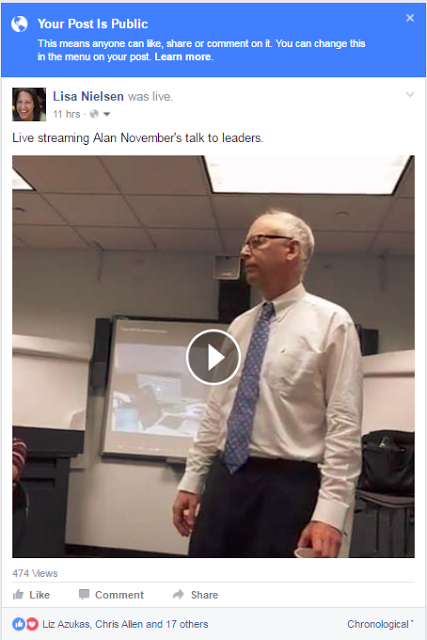
So what do you think? How could you use Facebook Live to break down the walls where you work? Did I miss any outcomes, things to remember, or mistakes? Please share in the comments.
Lisa Nielsen writes for and speaks to audiences across the globe about learning innovatively and is frequently covered by local and national media for her views on “Passion (not data) Driven Learning,” "Thinking Outside the Ban" to harness the power of technology for learning, and using the power of social media to provide a voice to educators and students. Ms. Nielsen has worked for more than a decade in various capacities to support learning in real and innovative ways that will prepare students for success. In addition to her award-winning blog, The Innovative Educator, Ms. Nielsen’s writing is featured in places such as Huffington Post, Tech & Learning, ISTE Connects, ASCD Wholechild, MindShift, Leading & Learning, The Unplugged Mom, and is the author the book Teaching Generation Text.
Disclaimer: The information shared here is strictly that of the author and does not reflect the opinions or endorsement of her employer.
Lisa Nielsen (@InnovativeEdu) has worked as a public-school educator and administrator since 1997. She is a prolific writer best known for her award-winning blog, The Innovative Educator. Nielsen is the author of several books and her writing has been featured in media outlets such as The New York Times, The Wall Street Journal, and Tech & Learning.
Disclaimer: The information shared here is strictly that of the author and does not reflect the opinions or endorsement of her employer.
